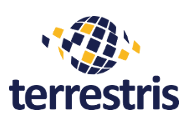- Increased user-friendlyness: In the future PostGIS will be installed in the database through a simple function call. The well known metadata table „geometry_columns“ will be turned into a view, which the database will create itself. Errors through omitted or wrong data are thus excluded.
- PostGIS goes 3D: For this new datatypes and an abundance of new functions were created. One of the bigger problems concerning 3D will be the clients able to visualise this data.
- Maybe the largest leap in PostGIS 2.0 will be raster processing. Simple import/export tools, functionality to convert raster to vector and vice versa, functionality for map algebra and functions to alter the resolution of for example aerial images all look to be very promising. Further development will show if large amounts of raster data can be effectively stored in a database. At least the management of this data will be made a lot easier.
Bericht über die FOSS4G
FOSS4G Denver 2011
This year the FOSS4G took place in Denver, Colorado from September 12 – 16, 2011. With approximately 900 registrations it was the largest FOSS4G-conference to date. Besides workshops and tutorials 150 high-quality presentations informed about the development, status and use of Open Source Software (OSS).
In comparison to past conferences more presentations were decidedly technology oriented. Besides presentations regarding new projects primarily concerning WebMapping Framework developments like „MapQuery“, „JQuery Geo“ or also „GeoMap“, there were also talks about the “tried & trusted” projects.
Collaboration of projects
A new trend can be seen: As projects become more mature one can make out attempts where diverse projects are united in so called ‘stacks’ with the objective of covering a wide range of requirements.
Maybe the most prominent example of such a stack is the OpenGeo-Suite, which mainly consists of the components PostGIS, GeoServer, GeoWebCache, OpenLayers and GeoExt. The argument often voiced by proprietary vendors that nobody is behind open source projects in ernest is being muted by the OpenGeo Suite: It is available as a community- as well as an enterprise edition with support, training and bugfix-guarantees. As the exclusive partner of OpenGeo for Germany and Austria you can get information regarding the OpenGeo Suite from terrestris or directly from OpenGeo.
Also in other projects attempts at collaboration can be seen. A prime example is the Mapserver Stack. It is planned to unite projects like TinyOWS, MapCache and MapServer under one roof. With the same configuration MapServer will be enhanced by the WFS-T (TinyOWS) and Tile-Caching interface (MapCache). First steps in this directions have been undertaken and a first version can be expected at the beginning of 2012.
QGIS Server
QGIS server can be viewed as a new star in the WMS-server sky. Pirmin Kalberer from our partner company SourcePole introduced some new functionality and the new QGIS extension „QGIS-Cloud“, which allows easy publication of geodata through QGIS server via a Cloud-Server. The seamless interoperability between the widely recognised and functionally excellent Desktop-GIS QGIS as a configuration interface and QGIS-server has to be mentioned. A project created in QGIS including a print layout interactively compiled by the QGIS-Print-Composer can be directly published through the QGIS-Server as an ‘enhanced’ WMS. One can call it enhanced because the print composer can be reached through an HTTP-interface („GetPrint“). The creation of print templates through programming or the editing of configuration files is no longer necessary. QGIS server thus offers a stable map server with a focus on ease of use.
OpenSource goes mobile
One focus of the Open Source Community this year was on mobile clients. Besides desktop GIS like gvSIG Mobile, usable on mobile devices there was an emphasis on the development of WebGIS-Clients that utilise the browsers of mobile devices. Through the implementation of touch-functionality in OpenLayers during a code-sprint in Lausanne, Switzerland in February of this year the foundation for further development was laid. Projects that need mention in this context are the development by camptocamp for the University of Lausanne and the client for the Swiss Confederation based on GeoExt realised by terrestris. The source code for the latter project will be contained in one of the next GeoExt releases.
PostGIS 2.0
With some excitement the new version of PostGIS 2.0 is being expected. During this years FOSS4G Leo Shu and Regina Obe presented functionality that will be new in PostGIS 2.0. The focus of this version will be on the following 3 points:
